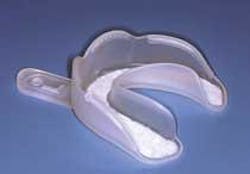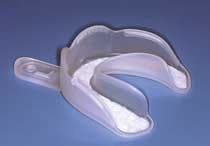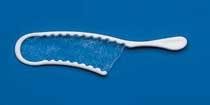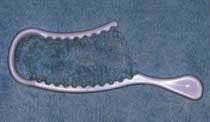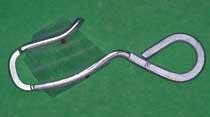Ask Dr. Christensen
In this monthly feature, Dr. Gordon Christensen addresses the most frequently asked questions from Dental Economics® readers. If you would like to submit a question to Dr. Christensen, please send an e-mail to [email protected].
For more on this topic, go to www.dentaleconomics.com and search using the following key words: double-arch impression tray, full-arch impression tray, occlusion, bonding agents, postoperative tooth sensitivity.
Q I have been using double-arch impression trays for simple crown cases for up to two units. Recently, I changed laboratories, and I have been told by the laboratory technician that the double-arch tray technique is not adequate. The lab claims that use of a full-arch impression and cast for these situations is more accurate, and that I should change. Is the double-arch concept adequate for one or two units?A Many patients require one or two indirect restorations, and the majority of general dentists do one or two crowns at a time, rather than multiple units. Most dentists in the United States use a double-arch impression tray concept for one or two units of crowns, inlays, or onlays. However, there are some requirements that must be observed to make this concept work well.Occlusion relates directly to whether or not a double-arch impression tray should be used. Often, patients needing crowns are in their mature years, and their occlusion is relatively stable. The occlusion may also be unstable, with missing teeth — i.e., shifts from one position to another when chewing, premature contacts, and potentially pathogenic situations present. I suggest observing the following characteristics of the patient's occlusion before deciding whether to use a double-arch or full-arch impression tray:
- If the occlusion is stable, a canine rise is present, and you plan to place one or two restorations into the stable occlusal environment, a double-arch tray is acceptable.
- If there are a few occlusal prematurities, such as lateral shifts from centric relation to the maximum intercuspal position, and these prematurities can be removed to correct the occlusion, then a double-arch tray is still acceptable.
- If a canine rise is present, it opens the posterior occlusion when the patient moves his or her teeth laterally, and frees the posterior teeth from occluding. When the patient does not have a canine rise present, all or most of the posterior teeth occlude when the jaw is moved laterally, and a double-arch tray is less acceptable. However, these trays can still be used if care is taken to adjust occlusion in retrusive and lateral movements when the restorations are seated.
- If numerous teeth are missing and the occlusion is unstable, a double-arch tray is usually not acceptable and an impression made in a full-arch "stock" tray (Figure 1) or a light-curing custom tray is indicated (Figure 2). This provide additional knowledge of tooth anatomy on the opposite side and better development of optimum occlusion on the new restorations.
Assuming that the occlusion was either acceptable from the start or corrected before making the tooth preparations, there are several necessary characteristics for an adequate double-arch tray. Figures 3 and 4 relate to the following points:
- The sides of the tray should be separated wide enough so that when the tray is placed in the mouth, teeth do not touch the tray. When the impression is completed, if any teeth touch the tray, the impression should be rejected since contact with the tray causes distortion. If only the soft tissue touches the tray, the impression is usually still adequate.
- The double-arch tray should preferably not have high sides on it, since the sides can be distorted by contact with the palate, the tori that are present, or other peculiar bony characteristics, thus distorting the impression.
- The interocclusal wafer should be thin and nonwater-absorbing. If the wafer absorbs water and dries out before pouring, the occlusal relationship will be distorted. Trays that have thick interocclusal wafers should not be used because they can easily distort the occlusion when the patient bites on the wafer.
- The connector between the right and left sides of the tray on the posterior portion should be thin enough to allow closure of the teeth without restricting or influencing the occlusion by soft-tissue contact distal to the most posterior teeth.
In summary, making impressions for one or two inlays, onlays, or crowns in a double-arch impression tray is an excellent technique, if the tray and occlusion requirements are taken into consideration. Our most recent video shows my suggested use of double-arch impressions and full-arch impressions, including their specific indications.
For more information on this subject, see our new video, V1931, on "Predictable Fixed and Removable Prosthodontic Impressions." Contact Practical Clinical Courses at (800) 223-6569 or visit our Web site at www.pccdental.com.
Q In dental journal articles, I frequently see dentin bonding agents referred to as fourth, fifth, or sixth-generation bonding agents, as though all of us know what they are talking about. What are these generations? Are they important, and if so, which generation is the best?A Your question deserves a long and scientific answer, but I will provide short summary answers that should help you determine if the differences among the various generations make a difference to you and your patients.It has been my observation that typical dentists require only a few desirable characteristics from their bonding agents. The most commonly mentioned necessary characteristic is the ability to reduce or eliminate postoperative tooth sensitivity after placing a direct or indirect restoration. Of course, ease of use, moderate cost, and bond to dentin are also desirable. Generations Four through Six (described below) can provide these characteristics when used correctly.
• First and Second Generation: The concept of dentin bonding was introduced with the first and second generations of bonding agents in the early 1960s, but these bonding agents were rudimentary, had only slight bond to dentin, and relied on penetration into the "smear" layer for the slight bond.
• Third Generation: In the 1980s, the third generation made its debut. This generation included dentin etching, a separate primer, three components, and a moderate bond.
• Fourth Generation: In the early 1990s, the fourth generation came along, promoting dentin etching, "hybridization," the concept of sealing dentin, wet bonding, and a moderately strong bond. However, the techniques were relatively complicated. Unless these bonding agents were used properly, postoperative tooth sensitivity was experienced, often leading to the need for endodontic therapy.
• Fifth Generation: Rapid changes in bonding agent chemistry marked the fifth generation introduced in the mid-1990s, with "two-bottle" systems, combined primer and adhesive, and moderately high in-vitro bond strengths. These systems have had clinical success if used properly, and they are easier to use than previous systems.
• Sixth Generation: In the late 1990s and early 2000, the sixth generation of bonding agents was welcomed by practitioners because of the greatly reduced postoperative tooth sensitivity reported from the field. These two-bottle systems have significantly less postoperative tooth sensitivity than previous generations, but the bond-to-tooth structure has been reported to be somewhat weaker than the previous two generations. The higher pH of the self-etching primers does not provide the same highbond-to-tooth structure that use of phosphoric acid did. In spite of lower bond strengths, the commercial market soon moved to these systems, reflecting practitioners' desire to have less sensitivity vs. higher bond. When using this technique, some practitioners are etching enamel surfaces, washing the acid off rapidly, and placing a self-etching, sixth generation agent over the entire tooth preparation. This technique provides both excellent bond-to-enamel and good bond-to-dentin. Currently, it is the most popular technique, but the seventh generation is coming on fast.
• Seventh Generation: Recently, many companies have marketed one-bottle bonding agents that have acid, primer, and bond in one bottle. These agents have a thin film thickness, usually less than 10 microns. Bond-to-dentin and reduction or elimination of postoperative tooth sensitivity have been reported to be comparable to sixth generation agents. The only negative characteristic that has been expressed is the possibility of a shorter shelf life than two- or three-bottle agents, because the ingredients are mixed together by the manufacturer.
In answer to your question, what generation of bonding agent to use, I have the following suggestions.
If you are satisfied with your current bonding agent, stay with it. Generations Four, Five, Six, and Seven can serve very well when used properly. Some are more complicated and difficult to use than others. Currently, many dentists are staying with sixth generation self-etching bonding agents because of their obvious clinical success in decreasing postoperative tooth sensitivity.
The most popular product is Clearfil SE Bond from Kuraray, but many companies have now placed products on the market with similar chemistry. The only apparent disadvantages of the sixth generation of bonding agents are a thick (40 micron +) film thickness and lack of radiopacity in the bond. Don't think that because a bonding agent is a later generation, it is necessarily better than previous generations.
Dr. Christensen is a practicing prosthodontist in Provo, Utah, and Dean of the Scottsdale Center for Dentistry. He is the founder and director of Practical Clinical Courses, an international continuing-education organization initiated in 1981 for dental professionals. Dr. Christensen is a cofounder (with his wife, Rella) and senior consultant of Clinicians Report (formerly Clinical Research Associates), which since 1976 has conducted research in all areas of dentistry and publishes its findings to the dental profession in the "Gordon J. Christensen Clinicians Report" monthly newsletter. He is an adjunct professor at Brigham Young University and the University of Utah. Dr. Christensen has educational videos and hands-on courses on the above topics available through Practical Clinical Courses. Call (800) 223-6569 or (801) 226-6569.
